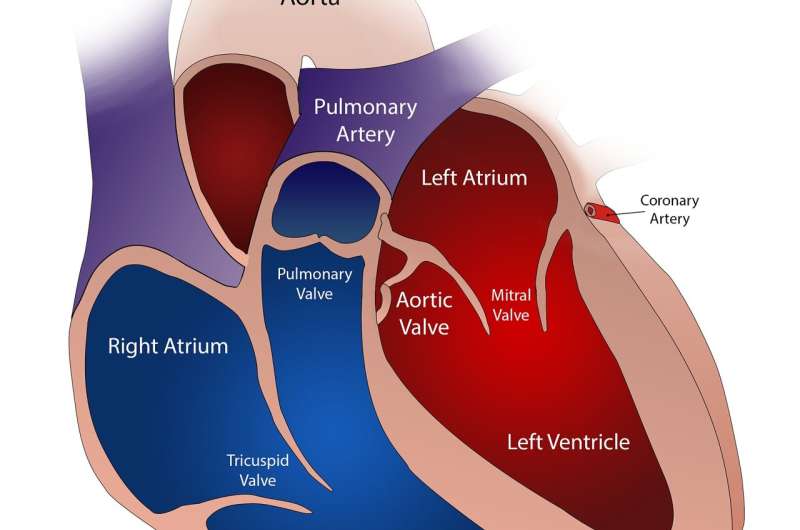Study finds that catheter-based valve replacement helps more heart patients

Aortic stenosis, a narrowing of the aortic valve opening that restricts blood flow through the heart, is one of the most common and serious heart valve diseases. The aortic valve has three leaflets—known as tricuspid—but 1% of the population is born with two leaflets—known as bicuspid.
While stenosis can occur in both, bicuspid aortic valves are prone to early wear and tear, often leading to narrowing, or stenosis, in patients in their 50s or 60s.
Currently, many interventional cardiologists reserve TAVR procedures for patients with tricuspid aortic stenosis. But patients with bicuspid aortic stenosis were left with just one option: Open-heart surgery.
"In carefully selected, low-risk patients, this minimally invasive TAVR procedure may be beneficial," said interventional cardiologist Raj Makkar, MD, vice president of Cardiovascular Innovation and Intervention at Cedars-Sinai and also the Stephen R. Corday, MD Chair in Interventional Cardiology at Cedars-Sinai. "We are in the midst of a transcatheter heart valve revolution and expect this particular procedure to become more and more commonplace with each passing year."
Makkar is widely respected as a pioneer in minimally invasive, catheter-based heart valve replacements. In fact, Cedars-Sinai physicians have performed more transcatheter aortic valve replacements and mitral valve repairs than any other U.S. center, with outcomes that place Cedars-Sinai among the top-performing programs nationally. It is also one of just a handful of centers in the U.S. that has expertise in minimally invasive, catheter-based procedures for all four heart valves.
Study details and results
In the JAMA study, researchers reviewed data from a national registry of nearly 160,000 patients—7,058 patients with bicuspid aortic stenosis and 152,603 patients with tricuspid aortic stenosis—who underwent TAVR.
Using a statistical matching technique known as propensity matching, researchers found no significant difference between outcomes among the two patient groups. Furthermore, both groups had low—and similar—procedural complications and similar improvement in aortic valve areas, functional status and quality of life at one year.
While there's much excitement in the cardiology world about using TAVR to treat patients with bicuspid aortic stenosis, researchers suggest that before patients with bicuspid aortic stenosis agree to a TAVR procedure, they should ensure their interventional cardiologist and healthcare team have extensive experience with the technique.
"When it comes to any type of heart surgery or procedure, especially for difficult-to-treat conditions like bicuspid aortic stenosis, where you receive your care matters," said Eduardo Marbán, MD, Ph.D., executive director of the Smidt Heart Institute and the Mark S. Siegel Family Foundation Distinguished Professor. "Seeking care from the most experienced experts, who perform a high volume of cases, can mean all the difference not only for longevity of life but also for quality of life."
Generally, patients who undergo minimally invasive, catheter-based heart procedures face shorter hospital stays and fewer complications, and they are often back to their regular activities within days.
"Our hope is for this data to translate into better advocacy and decision-making among healthcare providers and patients diagnosed with bicuspid aortic stenosis," said Makkar, who also serves as professor of Cardiology in the Smidt Heart Institute. "By carefully selecting low-risk surgical patients with bicuspid aortic stenosis, we can add years to life and life to years."
More information: Raj R. Makkar et al, Association Between Transcatheter Aortic Valve Replacement for Bicuspid vs Tricuspid Aortic Stenosis and Mortality or Stroke Among Patients at Low Surgical Risk, JAMA (2021). DOI: 10.1001/jama.2021.13346




















